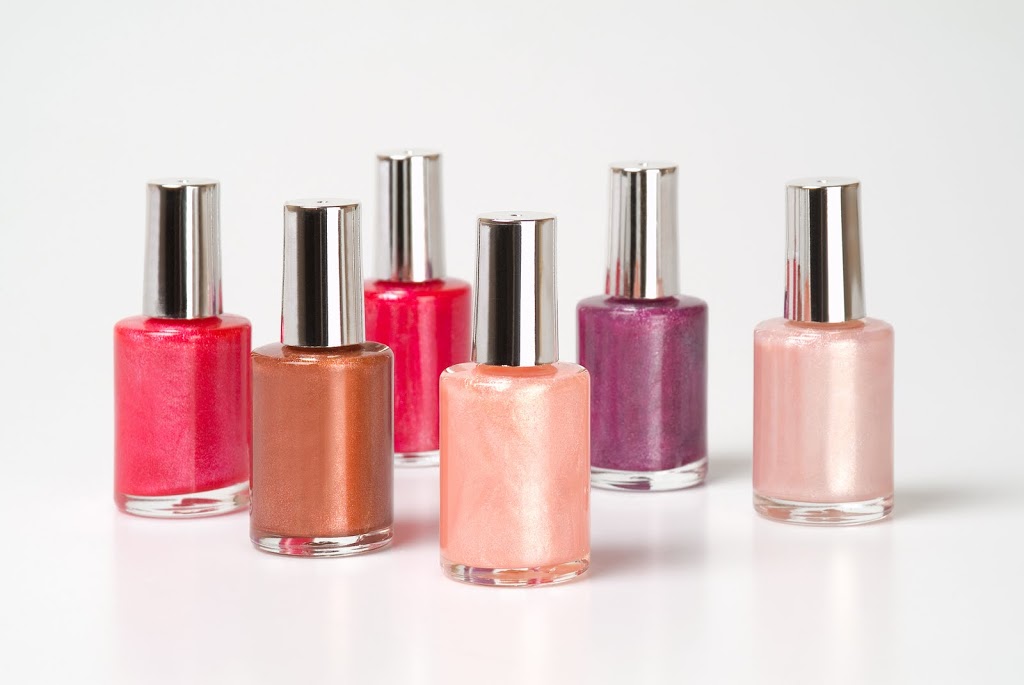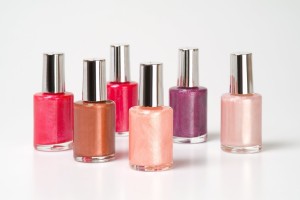
by theglamscientist | | chipping polish, mani, manicure, nail glue, nail polish |

I was watching The Rachel Zoe Project with my bestie earlier this week and of all the things to comment on, she said “Is her nail polish chipping?!” Yes, Rachel Zoe’s nail polish was chipping and frankly it always is. Like most girly girls, I absolutely love nail polish and I simply hate when it chips. But the truth is, nail polish just can’t be great on natural nails.
Why not?!
Nail polish is made of plasticizers, film formers, solvents etc that temporarily adhere to the nail beds. Women that wear nail enhancements like acrylic, gel or wraps don’t experience chipping within a few days like with natural nails. The difference is, our natural nails have oils and moisture that prevent the nail polish from really gripping the surface. Nail enhancements create a barrier between the natural nail and the nail polish that prevents oil and moisture from inhibiting the performance of the polish. In addition to that, our natural nails are flexible. When our nails bend, they create minor cracks in the film (nail polish) that eventually result in chipping. Since gels and acrylics are rigid the polish doesn’t have the chance to crack.
That’s the bad news, here’s the help…
I don’t typically need my nail polish to last for too long because I can only wear it when I don’t have lab work. Of course, I’m the exception, everybody else at least wants one full week. The key is to create a barrier between your natural nail and the nail polish. That barrier should also make your nails stronger and prevent a lot of the bend and crack issue. Nail glue to the rescue! This is a cheap trick that you can try at home. It causes no damage to your natural nail and it doesn’t take a lot of time to do. Buy a small bottle of that brush on nail glue and apply a THIN coat to your natural nails. Let it dry and proceed with your normal nail polish application fun… basecoat, 2 coats of polish and top coat.
Let me know how much longer your mani lasts now… Here’s to the Glam Life!
Oh, manicurists, leave a comment with any other tips and tricks you may have to help mani’s last longer. Thanks!
by theglamscientist | | lipgloss, lipstick, nail polish, speech, the lipstick theory |
I’ve been away from the blog for far too long, but with good reason. Things are picking up in the lab and I’ve been working on a little personal and career development. I recently joined Toastmasters International which is a world reknown public speaking and leadership organization. My primary goal was to refine my speaking skills to position me for a few business goals. I decided to that the cosmetics industry would be the general topic of all of my speeches. This week’s speech covered the lipstick theory which I thought to be both timely and interesting. I thought I would share a synopsis of the speech here to let you all into another part of my Glam World. 🙂
The lipstick theory arose out of the fact that in spite of economic disaster, women still purchased lipstick. It is representative of the idea that people always need a touch of luxury, even if it is an “affordable luxury” like lipstick. The theory held weight in 2001 following the 9/11 attacks when key players in the industry like Estee Lauder saw an increase in their cosmetics sales. While 9/11 was not quite a major economic disaster, it was certainly a precursor for what we face today.
The recession has shown that the lipstick theory is plausible, although it may be due for a name change. Nail polish has risen as the ultimate female recession buster which is not a great surprise considering the similarities. Both lipstick (lipgloss) and nail polish come in a multitude of colors, styles and textures so there is something for everybody. Color has a way of altering moods and complimenting personalities and styles. Personally, lipgloss and nail polish make me feel feminine and can instantly boost my mood. Women love to feel pretty so even if we can’t afford a fancy dress or the fab shoes of the season, we can usually splurge on choice glam cosmetics.
Clearly, this is not the 6 and 1/2 minute speech I gave at my club earlier this week, but that’s it in a nutshell (minus the quotes and the numbers, etc). You can expect more of my speech summaries in future blogs. 🙂
by theglamscientist | | brazilian keratin treatment, formaldehyde, keratin, nail hardener, nail polish |

I had the pleasure of attending America’s Beauty Show and FACE and BODY in Chicago a couple weekends ago. I had a blast! While I was there, I engaged in an interesting conversation with someone regarding formaldehyde. The conversation was spun from the fact there are now at least 10-15 different Brazilian/keratin hair straightening products and one main ingredient is formaldehyde. So the question was: Why is formaldehyde in cosmetics and why would anyone put it there?
Brazilian Keratin Treatments
I can guarantee you that your hair will not be blown straight just from keratin. We’ve discussed keratin a bit before, but let’s revisit briefly. Keratin is a major protein in skin, hair, nails and teeth. Keratin in the skin is flexible and soft, yet it is hard in hair, nails and teeth. Although the keratin in the straightening treatment does not do the straightening, it does improve the strength and appearance of the hair. I’m reluctant to also say it improves the overall health of the hair because technically hair outside of the follicle is “dead”… but you get my drift. Formaldehyde (in keratin treatments that contain it), is the ingredient that causes the hair to relax. There are keratin treatments that do not use formaldehyde as the straightening agent, however keratin is certainly not the ingredient doing the grunt work. Let’s face it, a keratin treatment is a lot more marketable than a formaldehyde treatment :-/
Formaldehyde in other cosmetics
In most other cosmetic applications, formaldehyde is not added directly to the formula. Instead, it is a by-product, so to speak, that increases the effectiveness of certain preservatives. These preservatives work because they release small amounts of formaldehyde over time. [Think: formaldehyde = embalming fluid = preservative] This slow release of formaldehyde means that a product has an ongoing stream of protection from harmful microbes and bacteria. One cosmetic that uses formaldehyde directly is/was nail polish. Formaldehyde is used in nail hardening polishes, not really in the polishes that are more for show than functionality. When you see nail polishes that claim formaldehyde and formaldehyde resin FREE it’s largely due to marketability as opposed to an actual difference in the product formula.
Dangers of Formaldehyde
Formaldehyde is certainly a dangerous chemical, but not so much in cosmetics. The FDA has approved the use of formaldehyde in cosmetic applications for hair and skin at no more than 0.2 percent of a formula. Products that contain formaldehyde releasing preservatives have no problem meeting this restriction. Formaldehyde in nail polish products can lawfully be present at 5% of the formula. Studies show most nail hardeners that contain formaldehyde come in well below 5%. Unfortunately, there have been some keratin treatments that have been found to contain 10 times the legal amount of formaldehyde.
When inhaled, formaldehyde can cause respiratory irritation like a burning sensation in the nose and throat. It can also cause sensitivity in the eyes. When I was in undergrad, I worked with formaldehyde (formalin) in large quantities daily. I can say from experience that acute formaldehyde exposure is no joke! Long term inhalation of formaldehyde has been linked to some forms of nasal and lung cancer… and therein lies the problem.
While formaldehyde is not inhaled when from products that use formaldehyde releasing preservatives, it can be inhaled from nail applications and the controversial keratin treatments. From the perspective of both a scientist and a consumer, nail hardeners do not cause me any worry… but the unregulated amounts of formaldehyde in keratin treatments paired with high temps used to make the treatment work cause me great concern.
and with that… Be Glam responsibly!


